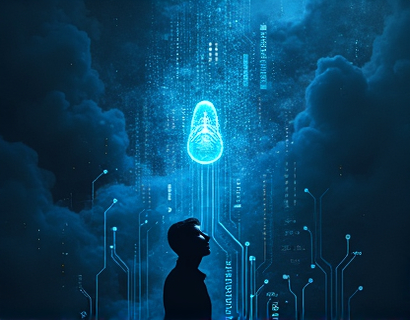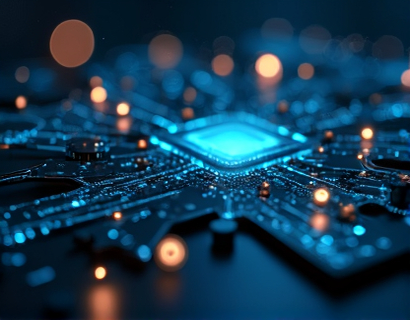AI-Driven Personalized Learning Platform: Transforming Education for Students and Lifelong Learners
The landscape of education is undergoing a significant transformation with the advent of AI-driven personalized learning platforms. These innovative tools are redefining the way students and lifelong learners access and engage with educational content. By leveraging advanced algorithms and machine learning techniques, these platforms tailor the learning experience to the unique needs of each individual, providing personalized, interactive lessons and instant feedback. This approach not only enhances the learning process but also empowers users to unlock their full potential and achieve their academic and professional goals.
Personalized learning is not a new concept, but the integration of AI technology has revolutionized its implementation. Traditional educational methods often struggle to cater to the diverse learning styles and paces of students. An AI-driven personalized learning platform addresses this challenge by continuously assessing a learner's performance and adapting the content accordingly. This dynamic approach ensures that each student receives the appropriate level of challenge and support, fostering a more effective and engaging learning environment.
Key Features of AI-Driven Personalized Learning Platforms
One of the most significant advantages of AI-driven personalized learning platforms is their ability to offer tailored lessons. These platforms use data analytics to identify a learner's strengths, weaknesses, and preferences, and then curate content that aligns with these insights. For instance, if a student excels in mathematics but struggles with literature, the platform can allocate more time and resources to literature while providing additional challenges in mathematics. This customization ensures that learners are always engaged and motivated, as the material is perfectly suited to their current level of understanding.
Instant feedback is another critical feature of these platforms. Traditional classrooms often suffer from delays in feedback, which can hinder the learning process. AI-driven systems, however, provide immediate responses to a learner's answers and performance. This real-time feedback helps students understand their mistakes and learn from them promptly. It also allows educators to monitor progress and intervene when necessary, ensuring that no student falls behind.
Interactive and Engaging Learning Experiences
Interactivity is a cornerstone of effective learning, and AI-driven platforms excel in this area. These systems incorporate various interactive elements such as quizzes, simulations, and gamification to make the learning process more engaging. For example, a history lesson can be transformed into an interactive timeline where students can click on different events to learn more, watch videos, or participate in quizzes. This multifaceted approach caters to different learning styles, making the content more accessible and enjoyable for all students.
Moreover, AI-driven platforms often include collaborative features that encourage peer interaction. Students can work together on projects, discuss topics in forums, and provide mutual support. This social aspect of learning not only enhances understanding but also builds important interpersonal skills. The combination of personalized content and collaborative opportunities creates a rich and dynamic learning environment that keeps students motivated and engaged.
Supporting Lifelong Learning
The benefits of AI-driven personalized learning extend far beyond the traditional classroom setting. Lifelong learners, whether they are professionals seeking to upskill or individuals pursuing personal interests, can greatly benefit from these platforms. The flexibility and accessibility of online learning make it possible for anyone, anywhere, to access high-quality educational resources. AI-driven systems can adapt to the varying schedules and commitments of lifelong learners, providing content that fits seamlessly into their lives.
For professionals, continuous learning is essential to stay competitive in their fields. AI-driven platforms can offer specialized courses and certifications that align with industry trends and requirements. For instance, a software developer can follow a personalized path that includes the latest programming languages and technologies, ensuring their skills remain up-to-date. This continuous learning approach not only enhances career prospects but also fosters a culture of lifelong learning and personal growth.
Enhancing Accessibility and Inclusivity
One of the most compelling aspects of AI-driven personalized learning platforms is their ability to enhance accessibility and inclusivity in education. These platforms can accommodate learners with diverse needs, including those with disabilities. For example, AI can provide text-to-speech options for visually impaired students or adjust the difficulty level of content for those with learning disabilities. By removing barriers to learning, these platforms ensure that education is truly inclusive and available to everyone.
Additionally, AI-driven platforms can bridge the educational gap in underserved regions. With internet access, students in remote or low-income areas can access the same high-quality educational resources as their peers in more privileged locations. This democratization of education has the potential to level the playing field and create more equitable opportunities for all learners.
Challenges and Considerations
Despite the numerous benefits, the implementation of AI-driven personalized learning platforms also comes with challenges. One of the primary concerns is data privacy and security. These platforms collect and analyze vast amounts of personal data to provide tailored experiences, which raises questions about how this data is stored, used, and protected. It is crucial for developers and educators to prioritize robust data protection measures and transparent policies to build trust with users.
Another challenge is the potential for over-reliance on technology. While AI-driven tools can significantly enhance learning, they should complement rather than replace human interaction. Educators play a vital role in providing guidance, support, and emotional connection, which are essential components of a well-rounded education. Striking the right balance between technology and human interaction is key to creating effective learning environments.
Future Prospects and Innovations
The future of AI-driven personalized learning is promising, with ongoing advancements in technology poised to further enhance these platforms. One area of innovation is the integration of natural language processing (NLP) and chatbots, which can provide more sophisticated and human-like interactions. These advancements can make the learning experience even more intuitive and user-friendly, reducing the learning curve for both students and educators.
Another exciting development is the use of augmented reality (AR) and virtual reality (VR) in personalized learning. These immersive technologies can create realistic and interactive learning environments that are difficult to replicate in traditional classrooms. For example, students can explore historical sites, conduct virtual science experiments, or practice language skills in realistic scenarios. The combination of AI and AR/VR has the potential to revolutionize the way we learn and teach.
Conclusion
AI-driven personalized learning platforms represent a significant leap forward in education, offering tailored, interactive, and inclusive learning experiences. By leveraging advanced technologies, these platforms empower students and lifelong learners to reach their full potential and achieve their goals. As the education landscape continues to evolve, the integration of AI will play a crucial role in shaping the future of learning, making education more accessible, effective, and engaging for all.










































